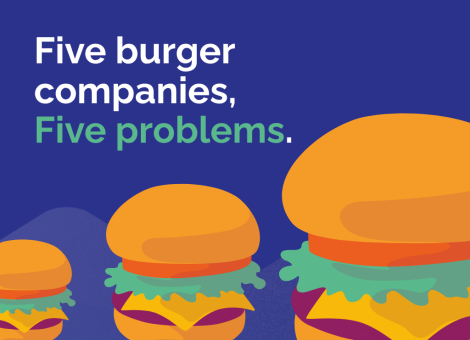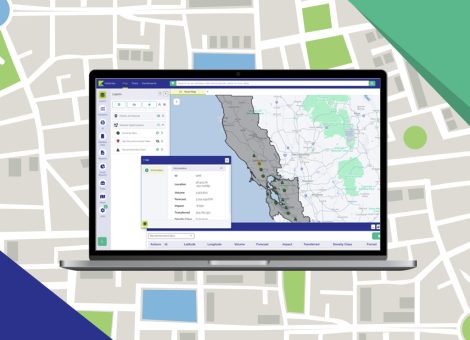The facts on how machine learning is uprooting manual fuel pricing
Fuel retailing is an ever-evolving business, wrapped within ever-evolving markets. As markets mature, fuel retailers will endure increasing levels of uncertainty. Survival in these evolving markets is dependent on your ability to remain flexible in response to long-term market changes, unexpected competitor events, and day-to-day pricing fluctuations.
As you move through the four phases of fuel market maturity — stable, unstable, competitive, and volatile — you’ll notice that the challenges associated with effective fuel pricing become increasingly complex and varied. In order to set, maintain, and optimize a successful fuel pricing strategy, you’ll need an in-depth understanding of:
- The conditions of the micro-market and surrounding markets
- The demographics, behaviors, and preferences of your local customer base
- The competitive landscape, including the location attributes and brand performance of nearby sites
Each of these elements (and more) will have an impact on your margins and should inform your pricing strategy through each stage of market maturity.
So how do you make sure you are continually able to maximize your return in any of these stages?
“Gut Feel” Alone Will No Longer Cut It
As markets become more competitive, pricing strategists will sometimes need to implement price changes several times a day. With everything from competitive positioning to inclement weather affecting the optimal price, strategizing effectively is nearly impossible without technology.
Yes, you could use a spreadsheet or a basic pricing software to create and deploy prices based on your gut instincts and prior market knowledge — but in unpredictable markets, this type of manual pricing is not practical nor effective.
The human brain alone cannot compute the optimal price in relation to all of the outlying, competing, and ever-evolving market forces that impact price. Dynamically generating the right price at the right time of day for the right location requires a dynamic, agile pricing strategy; it requires machine learning based fuel pricing technology.
AI and Machine Learning Have Gone from “Nice-to-Haves” to “Must-Haves”
When volume and margin goals drive the decisions your pricing team makes on a daily, weekly, and monthly basis, you can’t afford to leave it up to your gut. Machine-learning pricing tools are a fundamental component of dynamic fuel pricing in deregulated markets.
Using a complex, data-driven, and flexible fuel pricing algorithm, your automation tool can generate the optimal prices under even the most volatile of market conditions. What’s more, automated pricing tools can generate and deploy these optimal prices more quickly than any one pricing strategist could do, using manual pricing systems.
AI and machine learning can help you maximize your margins and maintain your competitive edge in the market — but beware to not do this blindly.
There Will Always Be Room for Human Intervention
Yes, automation and fuel price machine learning tools can be your trusted, reliable resource for making pricing decisions in deregulated markets. However, that doesn’t mean you can just set up your pricing tool and forget about it.
Instead, the key to fuel pricing mastery throughout any stage of market maturity is a combination of science, experience, and automation.
Even the most advanced of AI and machine learning tools require some level of manual intervention. When you’re developing your algorithm, you’ll need the market expertise and company knowledge to set the right strategy and feed the right data into the system. Later, as the algorithm is generating prices and highlighting exceptions, you need to know when manual intervention is necessary and how to approach that intervention when it’s time.
The goal of implementing an automated pricing tool is not to replace your pricing strategy team with the technology, but to automate and optimize routine pricing tasks so you can focus on the higher-value tasks associated with managing fuel networks in complex, volatile markets.
Maximize Your Margins With the Winning Combination of Art, Science and Expertise
AI and fuel price machine learning algorithms can help you gain the context, conviction, and complexity needed to make more successful pricing decisions for your network. When you combine that technology with expert insight and intimate market knowledge, you can’t lose.
Ready to say goodbye to manual fuel pricing strategies? Chat with a fuel retail specialist today to learn more about how our automated pricing tools can help your network succeed.
Request a Consultation
Read more articles about:
Fuel pricingSubscribe and get the latest updates
You may unsubscribe from our mailing list at any time. To understand how and why we process your data, please see our Privacy & Cookies Policy
Related posts
Location intelligence
Five burger companies, five problems
These burger brands had challenges from international growth to understanding franchise locations cannibalization,...

Location intelligence
Market Optimizer: Demo video
Market Optimizer allows users to strategically grow their network in existing markets while balancing revenue...

